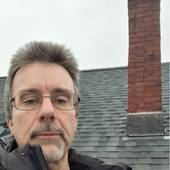 When I take my kids to the amusement park there is one important sign they pay close attention to, the height gauge. You know the ones that are at the entrance of all the rides usually with the exception of the kiddie rides. The sign will say something like, you must X inches tall to ride. If you don't measure up, you can't ride. Or worse, you have to go on with mom or dad. No one wants to do that!
When I take my kids to the amusement park there is one important sign they pay close attention to, the height gauge. You know the ones that are at the entrance of all the rides usually with the exception of the kiddie rides. The sign will say something like, you must X inches tall to ride. If you don't measure up, you can't ride. Or worse, you have to go on with mom or dad. No one wants to do that!
Measuring is fundamental to houses. Without measurement a house or for that matter just about anything could not be built. In a typical house, there are literally thousands of measurements that need to be made and checked during construction. It doesn't stop there, after construction when modifications are made, the same obviously applies.
Part of the job of the home inspector is recognizing when measurements may be off. Some measurements have changed over time, like guardrail baluster spacing, while others have remained fairly constant. An example of this would be brick and mortar joints. Joints are typically about half an inch with standard modular bricks.
Ascending a roof recently, scaling the rear slope, my target of interest, the chimney, finally emerged above the ridge. At last seeing the structure, I was immediately struck by its compact design. Not that the chimney was mini, no it looked average size, it was the mortar joints or the almost lack there of.
Gaining height I now saw the top of the chimney was unfinished, lacking a cement covering or crown. These were sure signs that intense scrutiny was warranted.
Carefully walking back from this amateur built chimney, I saw yet another issue from the side view. The top of the chimney was barely higher than the roof ridge. Yet another sign of an unskilled person performing what was indisputably non permitted and un-inspected work.
Chimneys are required to conform to what is commonly known as the 2 - 3 - 10 rule. The requirement states that a chimney must be 3 feet above the roof and 2 feet above any part of the building within 10 feet of the chimney.

This particular chimney is three feet above the roof. Maybe this "mason" knew that much about the rule. However it is no where close to being two feet higher than the ridge. A quick measurement placed the chimney about 9 feet away from the peak and about 10 inches above. Not even close.
Because this house was older, over 100 years, I suspected the chimney had needed rebuilding. Once I entered the attic, I found out different.
The second floor unit of this two family home had been renovated less than 10 years previous. Once in the attic I could see the roof and ceiling structure were newer. The roof had been raise to create a second floor apartment. When raising the roof, one must also raise the chimney.
Here was the original chimney top with the new chimney extension, for want of a better word, plopped on top. The masonry blocks have been hap hazardly placed, mimicking the poor brick work on the exterior.
Sometimes things just don't measure up to the rules, but also in quality.

Comments(13)